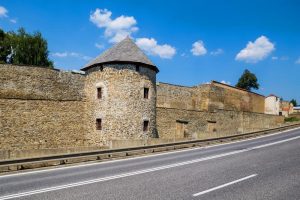Support our authors
DonateThe White Lady of Lőcse – Part 1

Almost every country has its own White Lady figure deeply rooted in folklore. In a popular medieval legend from the United Kingdom the White Lady is a ghost who appears in a house in which a family member is soon to die, in French mythology the Dames Blanches are female spirits who sometimes require one to join in their dance to help them in order to pass, in German folklore the Weisse Frauen are enchanted creatures who appear in the sunshine brushing their hair, guarding treasure or haunting castles. In Mexican folklore La Llorona is the ghost of a woman crying for her dead children.

The one thing common in these creatures is that they all wear white. Despite that these beings are seductive and sometimes less than benevolent, Christian symbolism assigns quite the opposite meaning to the colour white: it is the colour of innocence, purity and heavenly grace.
The most famous Hungarian White Lady was an actual historical figure. She was the only woman in Hungarian history ever tried and executed for treason and espionage. She was not a spirit or a ghost, she was very much flesh and blood, and with that blood, she paid dearly for her actions.
She is an enigma of whom Jókai, the famous Hungarian novelist wrote in his novel, The White Lady of Lőcse in 1885: “How could it be, that a woman, who threw away her country for a kiss, threw away her own, young beautiful head for that very same country?”
Julianna Géczy was born around 1680 and married a nobleman, János Korponay, with whom she had a son, Gábor. As a countess, she got fine education for a woman of her time; she could read and write in multiple languages, and in the end, that proved to be her downfall.
In 1703, not long after Rákóczi’s War for Independence broke out against Habsburg absolutism, her father almost immediately joined the revolutionaries, the so-called kuruc, and he was assigned to lead a siege on the castle Julianna’s still loyal to the crown husband was defending. That was the first time Julianna found herself caught in the crossfire. She managed to convince her husband in a letter to give up the castle, and swear allegiance to Rákóczi.

In 1710 she stayed in the city of Lőcse – Levoča in modern day Slovakia -, which was under siege by the Habsburg troops. She was not only rumoured to be the lover of the general of the kuruc defence, István Andrássy, but also a good friend of the wife of the Emperor’s general who was besieging the city. She carried letters between the two parties in secret to negotiate a formal capitulation in which she succeeded. Despite that popular history tries to blame the fall of the city entirely on her.
Legend has it that she stole the keys to the tunnels that led from the city to outside of the perimeter from under his lover’s pillow and let the enemy inside.
On a wooden door leading to one of the secret tunnels a painter immortalised her in the act of treachery. She is standing there in a white dress, a blood red scarf thrown across her shoulder, she slips a key into the lock with one hand, with the other she’s calling seductively. Two other paintings are known of her, one inside a local mansion also depicts her in a white dress.
With the fall of Lőcse – one of the last cities standing – the revolution was crushed, and she was on the winning side. But not for long…
